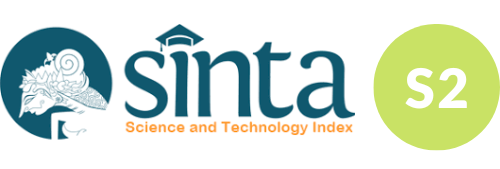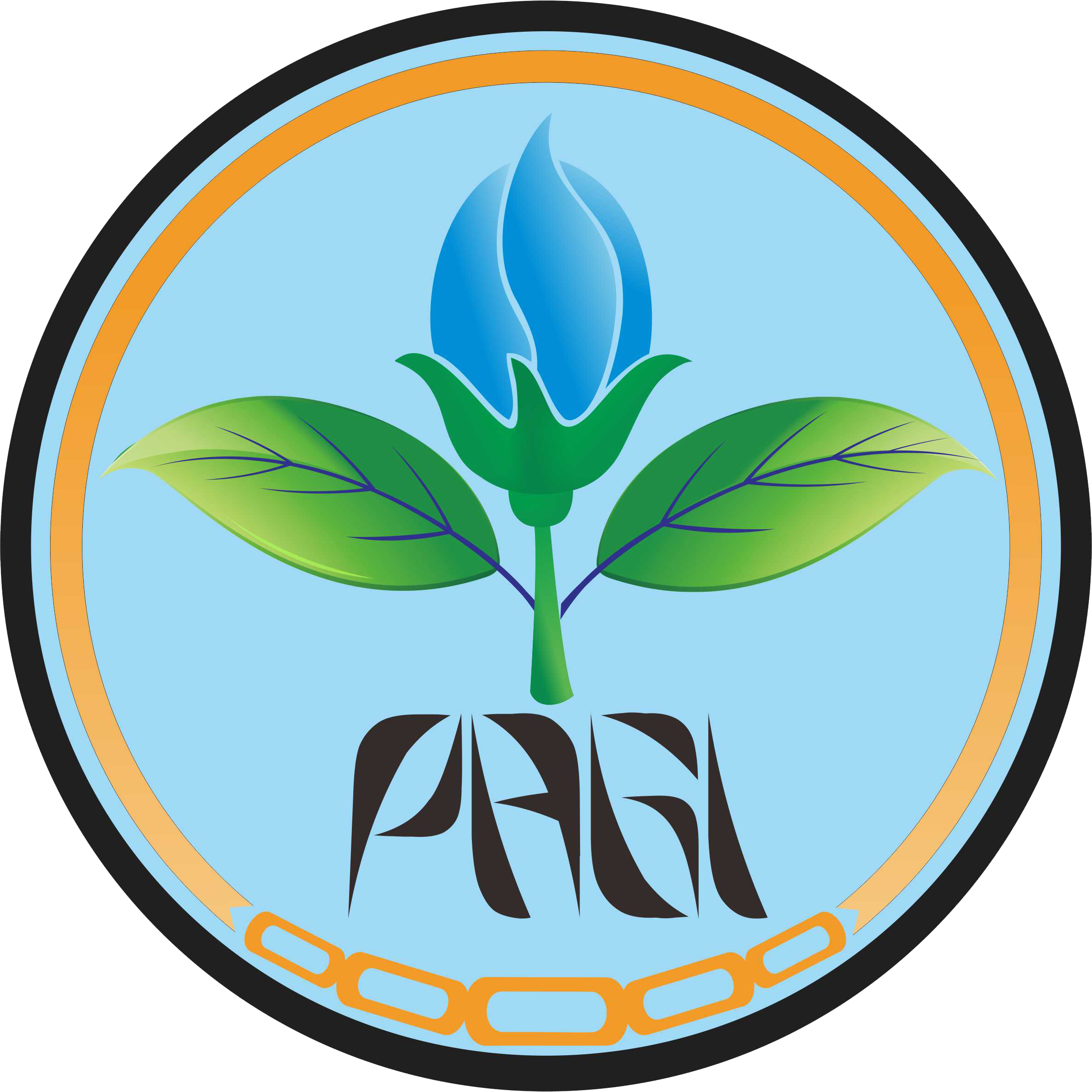Potential of Various Rice-Washing Water as a Source of Manufacturing Secondary Metabolites of Trichoderma harzianum T10 to Control Cucumber Crown and Root Rot
Abstract
Keywords
Full Text:
PDF(ID)References
Alam S, Sundaram KT, Singh UM, Srinivas Prasad M, Laha GS, Sinha P, Singh VK. 2024. Superior haplotypes towards the development of blast and bacterial blight-resistant rice. Front Plant Sci. 15(February):1–14. https://doi.org/10.3389/fpls.2024.1272326.
Ali MM, Hashim N. 2024. Exploring nutritional compositions, volatile compounds, health benefits, emerging processing technologies, and potential food products of glutinous rice: A review. Rice Sci. 31(3):251–268. https://doi.org/10.1016/j.rsci.2024.02.002.
Amrinola W, Sitanggang AB, Kusnandar F, Budijanto SE. 2021. Characterization of three cultivars of Indonesian glutinous rice: a basis for developing rice-based functional food. Ann Univ Dunarea Jos Galati Fascicle VI - Food Technol. 45(1):141–156. https://doi.org/10.35219/foodtechnology.2021.1.10.
Aparna, Skarzyńska A, Pląder W, Pawełkowicz M. 2023. Impact of climate change on regulation of genes involved in sex determination and fruit production in cucumber. Plants. 12(14):12142651. https://doi.org/10.3390/plants12142651.
Asiandu AP, Widjajanti H, Rosalina R. 2021. The potential of tofu liquid waste and rice washing wastewater as cheap growth media for Trichoderma sp. J Environ Treat Tech. 9(4):769–775.
Aydoğdu M, Kurbetli İ, Kitapçı A, Sülü G. 2020. Aggressiveness of green mould on cultivated mushroom (Agaricus bisporus) in Turkey. J Plant Dis Prot. 127(5):695–708. https://doi.org/10.1007/s41348-020-00328-8.
Bickel JT, Koehler AM. 2021. Review of pythium species causing damping-off in Corn. Plant Heal Prog. 22(3):1–7. https://doi.org/10.1094/PHP-02-21-0046-FI.
[BPS-Statistics Indonesia] BPS Statistics Indonesia. 2023. Produksi tanaman sayuran, 2021-2023. Jakarta (ID): Badan Pusat Statistik (BPS). [accessed 2023 May 25]. https://www.bps.go.id/id/statistics-table/2/NjEjMg==/produksi-tanaman-sayuran.html.
Bock CH, Chiang KS, Del Ponte EM. 2022. Plant disease severity estimated visually: a century of research, best practices, and opportunities for improving methods and practices to maximize accuracy. Trop Plant Pathol. 47(1):25–42. https://doi.org/10.1007/s40858-021-00439-z.
Chenari Bouket A, Arzanlou M, Tojo M, Babai-Ahari A. 2015. A web-based identification programme for Pythium species. Arch Phytopathol Plant Prot. 48(6):475–484. https://doi.org/10.1080/03235408.2015.1024043.
Contreras-Cornejo HA, Schmoll M, Esquivel-Ayala BA, González-Esquivel CE, Rocha-Ramírez V, Larsen J. 2024. Mechanisms for plant growth promotion activated by Trichoderma in natural and managed terrestrial ecosystems. Microbiol Res. 281:127621. https://doi.org/10.1016/j.micres.2024.127621.
Daunde AT, Baghele RD, Khandare VS. 2020. Management of prevalent diseases of cucumber (Cucumis sativus) through integrated approach. Int J Curr Microbiol Appl Sci. 9(7):3022–3028. https://doi.org/10.20546/ijcmas.2020.907.355.
Edelmann HG. 2022. Plant root development: is the classical theory for auxin-regulated root growth false? Protoplasma. 259(3):823–832. https://doi.org/10.1007/s00709-021-01697-z.
Fadiji AE, Yadav AN, Santoyo G, Babalola OO. 2023. Understanding the plant-microbe interactions in environments exposed to abiotic stresses: An overview. Microbiol Res. 271:127368. https://doi.org/10.1016/j.micres.2023.127368.
Guo G, Xiao J, Jeong BR. 2022. Iron source and medium pH affect nutrient uptake and pigment content in Petunia hybrida ‘Madness Red’ cultured In Vitro. Int J Mol Sci. 23(16):8943. https://doi.org/10.3390/ijms23168943. https://www.mdpi.com/1422-0067/23/16/8943.
Guo Z, Zhang J, Liu Z, Li Y, Li M, Meng Q, Yang Z, Luo Y, Zhang Q, Yan M. 2024. Trichoderma harzianum prevents red kidney bean root rot by increasing plant antioxidant enzyme activity and regulating the rhizosphere microbial community. Front Microbiol. 15(March):1348680. https://doi.org/10.3389/fmicb.2024.1348680.
Harman GE, Jin X, Stasz TE, Peruzzotti G, Leopold AC, Taylor AG. 1991. Production of conidial biomass of Trichoderma harzianum for biological control. Biol Control. 1(1):23–28. https://doi.org/10.1016/1049-9644(91)90097-J.
Hatvani L, Kredics L, Allaga H, Manczinger L, Vágvölgyi C, Kuti K, Geösel A. 2017. First report of Trichoderma aggressivum f. aggressivum green mold on Agaricus bisporus in Europe. Plant Dis. 101(6):1052. https://doi.org/10.1094/PDIS-12-16-1783-PDN.
Hewavitharana N, Kannangara SDP, Senanayake SP. 2018. Isolation, identification and mass production of five Trichoderma spp. on solid and liquid carrier media for commercialization. Int J Appl Sci Biotechnol. 6(4):285–293. https://doi.org/10.3126/ijasbt.v6i4.22128.
Khan RAA, Najeeb S, Mao Z, Ling J, Yang Y, Li Y, Xie B. 2020. Bioactive Secondary metabolites from Trichoderma spp. against phytopathogenic bacteria and root-knot nematode. Microorganisms. 8(3):401. https://doi.org/10.3390/microorganisms8030401.
Kumar A, Shrivastava D, Dixit M, Meena SK, Suman, Prasad A. 2021. Trichoderma: A plant growth promoting fungi. Gorteria J. 34(6):60–76.
Kumar V, Koul B, Taak P, Yadav D, Song M. 2023. Journey of trichoderma from pilot scale to mass production: A review. Agriculture. 13(10):2022. https://doi.org/10.3390/agriculture13102022.
Lakhdari W, Benyahia I, Bouhenna MM, Bendif H, Khelafi H, Bachir H, Ladjal A, Hammi H, Mouhoubi D, Khelil H, et al. 2023. Exploration and evaluation of secondary metabolites from Trichoderma harzianum: GC-MS analysis, Phytochemical profiling, antifungal and antioxidant activity assessment. Molecules. 28(13):5025. https://doi.org/10.3390/molecules28135025.
Lamichhane JR, Dürr C, Schwanck AA, Robin M-H, Sarthou J-P, Cellier V, Messéan A, Aubertot J-N. 2017. Integrated management of damping-off diseases. A review. Agron Sustain Dev. 37(2):10. https://doi.org/10.1007/s13593-017-0417-y.
Legodi LM, La Grange DC, van Rensburg ELJ. 2023. Production of the cellulase enzyme system by locally isolated Trichoderma and Aspergillus species cultivated on banana Pseudostem during Solid-state fermentation. Fermentation. 9(5):412. https://doi.org/10.3390/fermentation9050412.
Li R-X, Cai F, Pang G, Shen Q-R, Li R, Chen W. 2015. Solubilisation of phosphate and micronutrients by Trichoderma harzianum and its relationship with the promotion of tomato plant growth. Lin W-X, editor. PLoS One. 10(6):e0130081. https://doi.org/10.1371/journal.pone.0130081.
Liu B, Wei H, Shen W, Smith H. 2020. Long-term effect of non-irrigation and irrigation on soil Pythium, Fusarium, and Rhizoctonia communities and their relation with seed-rot, root-rot, and damping-off of soybean. Eur J Plant Pathol. 158(2):297–314. https://doi.org/10.1007/s10658-020-02059-w.
Lv J, Yang S, Zhou W, Liu Z, Tan J, Wei M. 2024. Microbial regulation of plant secondary metabolites: Impact, mechanisms and prospects. Microbiol Res. 283:127688. https://doi.org/10.1016/j.micres.2024.127688.
Markovich NA, Kononova GL. 2003. Lytic enzymes of Trichoderma and their role in plant defense from fungal diseases: A review. Appl Biochem Microbiol. 39(4):341–351. https://doi.org/10.1023/A:1024502431592.
Muñiz-Paredes F, Miranda-Hernández F, Loera O. 2017. Production of conidia by entomopathogenic fungi: from inoculants to final quality tests. World J Microbiol Biotechnol. 33(3):57. https://doi.org/10.1007/s11274-017-2229-2.
Nabayi A, Sung CTB, Zuan ATK, Paing TN, Akhir NIM. 2021. Chemical and microbial characterization of washed rice water waste to assess its potential as plant fertilizer and for increasing soil health. Agronomy. 11(12):2391. https://doi.org/10.3390/agronomy11122391.
Negi R, Sharma B, Kaur S, Kaur T, Khan SS, Kumar S, Ramniwas S, Rustagi S, Singh S, Rai AK, et al. 2023. Microbial antagonists: diversity, formulation and applications for management of pest–pathogens. Egypt J Biol Pest Control. 33(1):105. https://doi.org/10.1186/s41938-023-00748-2.
Okagu IU, Okeke ES, Ezeorba WCF, Ndefo JC, Ezeorba TPC. 2023. Overhauling the ecotoxicological impact of synthetic pesticides using plants’ natural products: a focus on Zanthoxylum metabolites. Environ Sci Pollut Res. 30(26):67997–68021. https://doi.org/10.1007/s11356-023-27258-w.
Paraschivu M, Simnic-craiova DS, Timisoara VM, Faculty H, County D. 2013. The use of the area under the disease progress curve (AUDPC) to assess the epidemics of septoria tritici in. Res J Agric Sci. 45(1):193–201.
Parkash V, Singh S, Deb SK, Ritchie GL, Wallace RW. 2021. Effect of deficit irrigation on physiology, plant growth, and fruit yield of cucumber cultivars. Plant Stress. 1:100004. https://doi.org/10.1016/j.stress.2021.100004.
Rai D, Tewari AK. 2018. Effect of different media and pH on growth and sporulation of Trichoderma harzianum (Th 14). Trends Biosci. 11(42):1–4.
Ramadhana AA, Soesanto L, Mugiastuti E, Manan A. 2022. Effect of four liquid organic wastes on the growth of four Trichoderma harzianum isolates and their effect on cucumber growth and yield. SINTA J (Science, Technol Agric. 2(2):19–30. https://doi.org/10.37638/sinta.2.2.19-30.
Roberts DP, Selmer K, Lupitskyy R, Rice C, Buyer JS, Maul JE, Lakshman DK, DeSouza J. 2021. Seed treatment with prodigiosin controls damping-off of cucumber caused by Pythium ultimum. AMB Express. 11(1):10. https://doi.org/10.1186/s13568-020-01169-2.
Saldaña-Mendoza SA, Pacios-Michelena S, Palacios-Ponce AS, Chávez-González ML, Aguilar CN. 2023. Trichoderma as a biological control agent: mechanisms of action, benefits for crops and development of formulations. World J Microbiol Biotechnol. 39(10):269. https://doi.org/10.1007/s11274-023-03695-0.
Schroeder KL, Martin FN, de Cock AWAM, Lévesque CA, Spies CFJ, Okubara PA, Paulitz TC. 2013. Molecular detection and quantification of Pythium species: Evolving taxonomy, new Tools, and challenges. Plant Dis. 97(1):4–20. https://doi.org/10.1094/PDIS-03-12-0243-FE.
Shehata MG, Badr AN, El Sohaimy SA, Asker D, Awad TS. 2019. Characterization of antifungal metabolites produced by novel lactic acid bacterium and their potential application as food biopreservatives. Ann Agric Sci. 64(1):71–78. https://doi.org/10.1016/j.aoas.2019.05.002.
Sigillo L, Pane C, Garaguso I, Luongo L, Galli M, Valente MT, Vitale S. 2020. First Report of Pythium spinosum as a causal agent of crown and root rot in greenhouse cucumber cultivation in Italy. Plant Dis. 104(12):3269. https://doi.org/10.1094/PDIS-02-20-0305-PDN.
Simko I, Piepho H-P. 2012. The area under the disease progress stairs: Calculation, advantage, and application. Phytopathology®. 102(4):381–389. https://doi.org/10.1094/PHYTO-07-11-0216.
Singh VK, Kumar A. 2023. Secondary metabolites from endophytic fungi: Production, methods of analysis, and diverse pharmaceutical potential. Symbiosis. 90(2):111–125. https://doi.org/10.1007/s13199-023-00925-9.
Soesanto L, Kustam, Mugiastuti E. 2019. Application of bio P60 and bio T10 in combination against Phytophthora wilt of papaya. Biosaintifika. 11(3):339–344. https://doi.org/10.15294/biosaintifika.v11i3.20389.
Soesanto L, Solikhah AN, Mugiastuti E, Suharti WS. 2020. Application of Trichoderma harzianum T10 liquid formula based on soybean flour against cucumber seedlings damping-off (</i>Pythium</i> sp.). Akta Agrosia. 23(1):11–18. https://doi.org/10.31186/aa.23.1.11-18.
Toporek SM, Keinath AP. 2021. A diagnostic guide for Pythium damping-off and root and stem rot of cucurbits. Plant Heal Prog. 22(3):415–418. https://doi.org/10.1094/PHP-02-21-0042-FI.
Tyśkiewicz R, Nowak A, Ozimek E, Jaroszuk-Ściseł J. 2022. Trichoderma: The current status of its application in agriculture for the biocontrol of fungal phytopathogens and stimulation of plant growth. Int J Mol Sci. 23(4):2329. https://doi.org/10.3390/ijms23042329.
Usman Ghazanfar M, Raza M, Raza W, Qamar MI. 2018. Trichoderma as potential biocontrol agent, its exploitation in agriculture: A review. Plant Prot. 2(3):109–139.
Uthpala TGG, Marapana RAUJ, Lakmini KPC, Wettimuny DC. 2020. Nutritional bioactive compounds and health benefits of fresh and processed cucumber (Cucumis sativus L.). Sumerianz J Biotechnol. 3(9):75–82. https://doi.org/10.13140/RG.2.2.17510.04161.
Vitti A, Bevilacqua V, Logozzo G, Bochicchio R, Amato M, Nuzzaci M. 2022. Seed coating with Trichoderma harzianum T-22 of Italian durum wheat increases protection against Fusarium culmorum-induced crown rot. Agriculture. 12(5):714. https://doi.org/10.3390/agriculture12050714.
Wu P-H, Chang H-X, Shen Y-M. 2023. Effects of synthetic and environmentally friendly fungicides on powdery mildew management and the phyllosphere microbiome of cucumber. Ulaganathan K, editor. PLoS One. 18(3):e0282809. https://doi.org/10.1371/journal.pone.0282809.
Xiao Z, Zhao Q, Li W, Gao L, Liu G. 2023. Strain improvement of Trichoderma harzianum for enhanced biocontrol capacity: Strategies and prospects. Front Microbiol. 14:1146210. https://doi.org/10.3389/fmicb.2023.1146210.
Zhang J-L, Tang W-L, Huang Q-R, Li Y-Z, Wei M-L, Jiang L-L, Liu C, Yu X, Zhu H-W, Chen G-Z, et al. 2021. Trichoderma: A treasure house of structurally diverse secondary metabolites with medicinal importance. Front Microbiol. 12:723828. https://doi.org/10.3389/fmicb.2021.723828.
Zhou X, Zeng M, Huang F, Qin G, Song Z, Liu F. 2023. The potential role of plant secondary metabolites on antifungal and immunomodulatory effect. Appl Microbiol Biotechnol. 107(14):4471–4492. https://doi.org/10.1007/s00253-023-12601-5.
Zin NA, Badaluddin NA. 2020. Biological functions of Trichoderma spp. for agriculture applications. Ann Agric Sci. 65(2):168–178. https://doi.org/10.1016/j.aoas.2020.09.003.Refbacks
- There are currently no refbacks.






